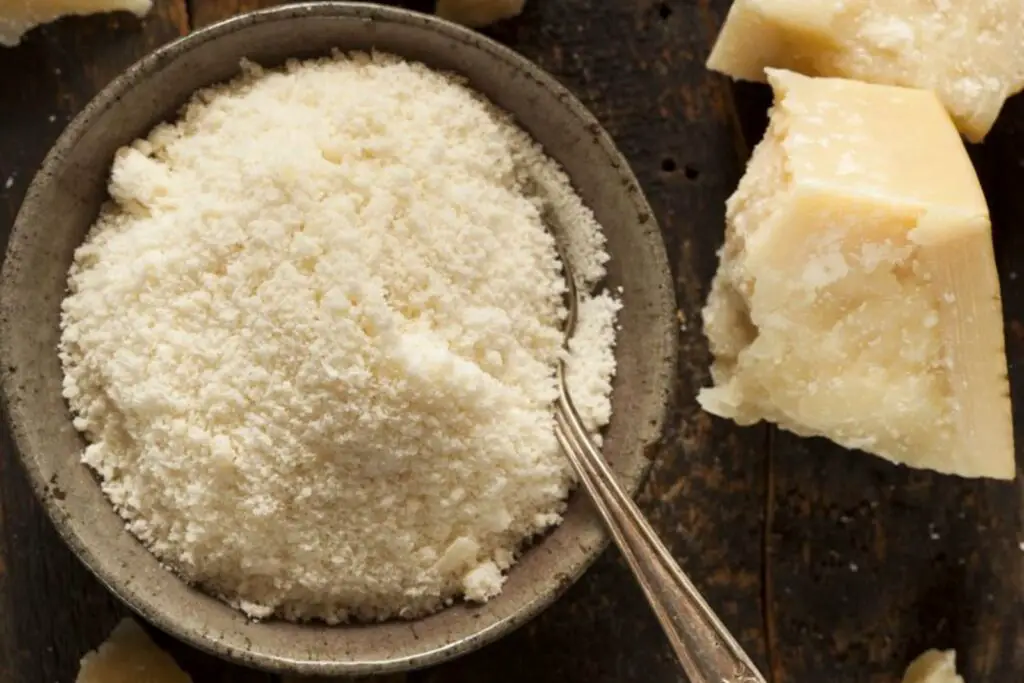
Cottage cheese is a popular dairy product known for its creamy texture and mild flavor. It is made by curdling milk with an acidic agent and is often enjoyed as a healthy snack or used as an ingredient in various recipes. If you find yourself with a surplus of cottage cheese or want to stock up for future use, freezing it can be a convenient option. Freezing cottage cheese properly will help maintain its taste and texture, allowing you to enjoy it later. In this article, we will provide you with a step-by-step guide on how to freeze cottage cheese to preserve its quality.
Here’s a guide on how to freeze cottage cheese:
Step 1: Choose the right cottage cheese
When it comes to freezing cottage cheese, it’s essential to start with fresh and high-quality cottage cheese. By selecting the right cottage cheese, you can ensure better results and maintain its taste and texture after freezing.
Begin by checking the expiration date on the cottage cheese container. Choose a product that is within its expiration date or close to it. This ensures that the cottage cheese hasn’t already started to deteriorate, which can negatively impact its quality even after freezing.
In addition to checking the expiration date, pay attention to the consistency of the cottage cheese. It should be smooth and creamy without any visible lumps or clumps. If you notice any separation or graininess, it might be a sign that the cottage cheese has already begun to spoil. Avoid using cottage cheese with such texture issues as it may not freeze well and could result in an unpleasant texture after thawing.
Another crucial aspect to consider is the presence of any odors or mold. Give the cottage cheese a sniff and discard it if you detect any sour or unpleasant smells. Mold growth on the surface of the cottage cheese is a clear indication of spoilage and should be avoided.
Step 2: Prepare the containers
Proper container preparation is crucial when it comes to freezing cottage cheese. Choosing the right containers and ensuring they are clean and odor-free will help maintain the quality of the cottage cheese during freezing and prevent any unwanted flavors or contamination.
When selecting containers for freezing cottage cheese, opt for airtight containers or freezer bags specifically designed for freezing purposes. These containers help create a barrier against moisture and air, which can cause freezer burn and affect the texture and taste of the cottage cheese.
Before using the containers, it’s important to clean them thoroughly. Wash the containers with warm, soapy water, rinsing them well to remove any soap residue. Pay attention to any corners or crevices that might trap food particles, as these can harbor bacteria or cause odors. Additionally, ensure the containers are completely dry before adding the cottage cheese to prevent the formation of ice crystals.
Freezer bags are another suitable option for freezing cottage cheese. If using freezer bags, choose those made specifically for freezer storage. Ensure they are sturdy and have a reliable seal to prevent air from entering and freezer burn from occurring. Like containers, freezer bags should also be clean and odor-free.
To avoid any transfer of odors or flavors to the cottage cheese, make sure the containers or bags are free from any residues from previous foods. Even subtle residual odors can affect the taste of the cottage cheese after freezing.
Step 3: Portion the cottage cheese
Dividing the cottage cheese into smaller portions before freezing is a practical step that offers several advantages. By portioning the cottage cheese based on your anticipated future usage, you can ensure convenience, minimize waste, and maintain the quality of the remaining cottage cheese.
One of the main benefits of portioning cottage cheese is the convenience it provides during the defrosting process. Freezing cottage cheese in smaller portions allows you to thaw only the amount you need for a particular recipe or serving. This way, you can avoid thawing the entire container and using only a portion of it, which may result in excess cottage cheese going to waste.
Additionally, portioning the cottage cheese allows for better control over the quantity used in various dishes. Whether you plan to use the cottage cheese for spreads, dips, or cooking, having it pre-portioned makes it easier to measure and incorporate into recipes accurately. This eliminates the need to thaw more cottage cheese than necessary and helps maintain the desired balance of ingredients.
Furthermore, dividing the cottage cheese into smaller portions helps preserve the quality of the remaining cottage cheese. Each time you open a container to use only a portion, the remaining cottage cheese is exposed to air and undergoes temperature changes during the thawing process. By minimizing the number of times the container is opened and the duration it spends at room temperature, you can preserve the overall quality of the cottage cheese.
To portion the cottage cheese, you can use small airtight containers or freezer bags. Divide the cottage cheese into individual servings or portion sizes that align with your future usage. Label each portion with the date of freezing to keep track of its freshness.
Can I freeze cottage cheese in its original container?
While it is possible to freeze cottage cheese in its original container, transferring it to a freezer-safe container or freezer bag is generally recommended. The original container may not provide adequate protection against freezer burn, and the cottage cheese may be exposed to temperature fluctuations when opened and closed frequently.
Step 4: Seal the containers
After portioning the cottage cheese, it’s important to properly seal the containers or freezer bags to create a tight and secure environment for freezing. This step helps maintain the quality and freshness of the cottage cheese during its time in the freezer.
Transfer each portion of cottage cheese into individual airtight containers or freezer bags. Airtight containers with secure lids or freezer bags with reliable seals are essential for preventing air and moisture from entering the packaging. This barrier helps prevent freezer burn, which can negatively affect the texture and taste of the cottage cheese.
When filling the containers or bags, leave a small amount of headspace at the top. This headspace allows the cottage cheese to expand slightly during the freezing process without causing the containers or bags to burst. As liquid expands when frozen, leaving some space accommodates this expansion and prevents any potential damage to the packaging.
It’s important to note that cottage cheese may release some liquid during freezing and thawing, resulting in a change in texture. The headspace also provides room for this expansion and any liquid accumulation, reducing the likelihood of spillage or mess when opening the containers or bags.
Ensure that the containers or bags are tightly sealed to create an airtight and moisture-resistant environment. Check for any gaps or openings that might compromise the seal, and adjust or reseal if necessary. A proper seal is crucial for maintaining the quality and integrity of the cottage cheese while it’s frozen.
Step 5: Label the containers
Labeling the containers or bags of frozen cottage cheese is a crucial step in keeping track of their freshness and ensuring that you use them in the proper order. By clearly marking the date of freezing, you can practice proper rotation and consume the oldest cottage cheese first.
When freezing multiple portions of cottage cheese, it’s common to store them together in the freezer. Without labeling, it can be challenging to determine the order in which they were frozen, leading to confusion and potential food waste if the cottage cheese remains unused for an extended period.
By labeling each container or bag with the date of freezing, you create a system that allows you to easily identify the cottage cheese’s age. This is important because frozen cottage cheese, like any other frozen food, is best consumed within a certain timeframe to maintain its quality and taste.
As time passes, the quality of frozen cottage cheese may gradually deteriorate, resulting in changes in texture, flavor, and overall appeal. By labeling the containers, you can ensure that you use the oldest portions first, reducing the risk of freezer burn or significant degradation of the cottage cheese.
When labeling, write the date of freezing in a clear and visible manner on each container or bag. You can use waterproof markers, freezer-safe labels, or even adhesive tape with written dates. Make sure the labels are securely attached and won’t fade or fall off during storage.
Properly labeling the containers or bags allows you to stay organized and make informed decisions about which portions to thaw and consume. It helps you avoid accidentally keeping frozen cottage cheese for an excessive period, ensuring that you enjoy it at its best quality.
Step 6: Remove excess air (optional)
When freezing cottage cheese in freezer bags, it’s recommended to remove excess air from the bags before sealing them. While this step is optional, it can help prevent freezer burn and maintain the quality of the cottage cheese during its time in the freezer.
Freezer burn occurs when moisture from the cottage cheese evaporates and forms ice crystals on its surface. The presence of excess air in the bag can contribute to this process by creating an environment where moisture can escape more easily. As a result, the texture and taste of the cottage cheese can be negatively affected.
By removing excess air from the freezer bags, you create a more tightly sealed and compact package, reducing the surface area exposed to air. This minimizes the potential for moisture loss and the formation of ice crystals on the cottage cheese.
To remove excess air from the freezer bags, follow these steps:
- Fill the freezer bag with the portioned cottage cheese, leaving a small amount of headspace for expansion.
- Carefully press out as much air as possible from the bag.
- Starting from the bottom, gently squeeze the bag to push the air towards the top.
- Once most of the air is removed, quickly seal the bag tightly to prevent air from re-entering.
It’s important to note that while removing excess air is beneficial, be careful not to squeeze the cottage cheese too vigorously, as it may result in unwanted texture changes.
Step 7: Freeze the cottage cheese
After properly sealing the containers or bags of cottage cheese, it’s time to place them in the freezer for the freezing process. Ensuring that the containers or bags are positioned correctly in the freezer is essential to maintain their integrity and prevent leakage.
When placing the sealed containers or bags in the freezer, select a flat surface where they can rest securely. This helps prevent any potential tilting or tipping that could lead to leaks or spills. Placing the containers or bags on a stable surface also helps maintain their shape and prevents them from being squished or damaged by heavier items.
It’s important to avoid stacking the containers or bags until they are completely frozen. Stacking them prematurely can result in uneven pressure on the containers or bags, potentially causing them to burst or leak. By allowing them to freeze individually first, you ensure that each portion of cottage cheese freezes evenly and maintains its intended shape.
Additionally, preventing stacking until the cottage cheese is frozen solid allows for easier access and retrieval. It avoids the need to separate partially frozen portions, reducing the risk of damaging the packaging or causing unnecessary mess.
Remember to leave some space around the containers or bags to promote proper air circulation within the freezer. This helps maintain a consistent temperature and ensures efficient freezing.
Once the containers or bags are placed in the freezer, it’s crucial to keep the freezer door closed as much as possible to maintain a stable temperature. Frequent door opening can lead to fluctuations in temperature, which may affect the quality of the frozen cottage cheese.
How long can I store frozen cottage cheese?
Frozen cottage cheese can be safely stored for up to 3 months. However, for the best quality and taste, it is recommended to consume it within 1 to 2 months. Proper packaging, labeling, and storage conditions contribute to maintaining the cottage cheese’s freshness during this duration.
Step 8: Thaw and consume
When you’re ready to use the frozen cottage cheese, proper thawing is essential to bring it back to its original texture and ensure optimal taste. Thawing the cottage cheese slowly in the refrigerator and stirring it gently afterward helps restore its desired consistency and enhances the overall eating experience.
To thaw frozen cottage cheese, follow these steps:
- Transfer the desired portion of frozen cottage cheese from the freezer to the refrigerator. Place it in a covered container or keep it in its sealed packaging to prevent any potential cross-contamination.
- Allow the cottage cheese to thaw slowly in the refrigerator. This gradual thawing process helps maintain its texture and minimizes the risk of bacterial growth.
- Thaw the cottage cheese overnight or for approximately 6-8 hours, depending on the portion size and the temperature of your refrigerator. Avoid rushing the thawing process by using alternative methods such as microwave or warm water, as they can affect the texture and compromise the quality of the cottage cheese.
- Once the cottage cheese is fully thawed, gently stir it with a spoon or fork. This helps redistribute any moisture that may have separated during freezing and thawing, restoring the original consistency and texture.
- After stirring, the cottage cheese is ready to be enjoyed. Use it as desired in recipes, as a topping, or as a standalone snack.
Thawing the cottage cheese in the refrigerator ensures a controlled and gradual thawing process. This helps minimize the risk of texture changes and maintains the overall quality of the cottage cheese. Stirring the thawed cottage cheese gently helps incorporate any separated moisture back into the cheese, ensuring a smooth and creamy texture.
Other related questions
Can I refreeze thawed cottage cheese?
It is generally not recommended to refreeze thawed cottage cheese. Freezing and thawing can affect its texture and quality, and refreezing may further degrade its taste and consistency. To minimize waste, it’s best to portion and freeze cottage cheese in quantities that can be used within a single thawing.
How do I know if the cottage cheese has gone bad after being frozen?
To determine if cottage cheese is still good after being frozen, assess its texture, odor, and appearance. If the cottage cheese exhibits an unpleasant odor, has developed mold, or shows signs of freezer burn (such as dry or discolored spots), it may not be suitable for consumption. Additionally, if the texture appears grainy, watery, or significantly altered, it is an indication that the cottage cheese may have deteriorated during freezing and should be discarded.
Can I freeze cottage cheese if it has already been opened?
Yes, you can freeze opened cottage cheese. Ensure that it is transferred to a suitable airtight container or freezer bag and follow the proper freezing steps outlined in the article. Freezing can help extend the shelf life of opened cottage cheese and prevent it from spoiling.
Can I freeze flavored or seasoned cottage cheese?
While it is possible to freeze flavored or seasoned cottage cheese, it’s important to note that freezing may affect the texture and taste of the added flavors or seasonings. It is recommended to freeze plain cottage cheese for best results. If you choose to freeze flavored or seasoned cottage cheese, be prepared for potential changes in flavor and texture upon thawing.
Can I freeze cottage cheese that has been cooked or used in a recipe?
Freezing cooked or used cottage cheese is not recommended. The texture and quality may be significantly altered during the cooking process and subsequent freezing. It is best to freeze fresh cottage cheese that has not been cooked or used in recipes for optimal results.
Can I freeze low-fat or fat-free cottage cheese?
Yes, low-fat or fat-free cottage cheese can be frozen. However, keep in mind that the texture may become slightly grainy after thawing. It’s recommended to give the thawed cottage cheese a gentle stir to restore its original consistency before consumption.
Can frozen cottage cheese be used for cooking or baking?
Frozen cottage cheese can be used in cooking or baking recipes that call for its texture and consistency, such as lasagna or casseroles. However, keep in mind that the texture may change slightly after freezing, so it may not work well in recipes that require a specific cottage cheese texture, such as dips or spreads.








